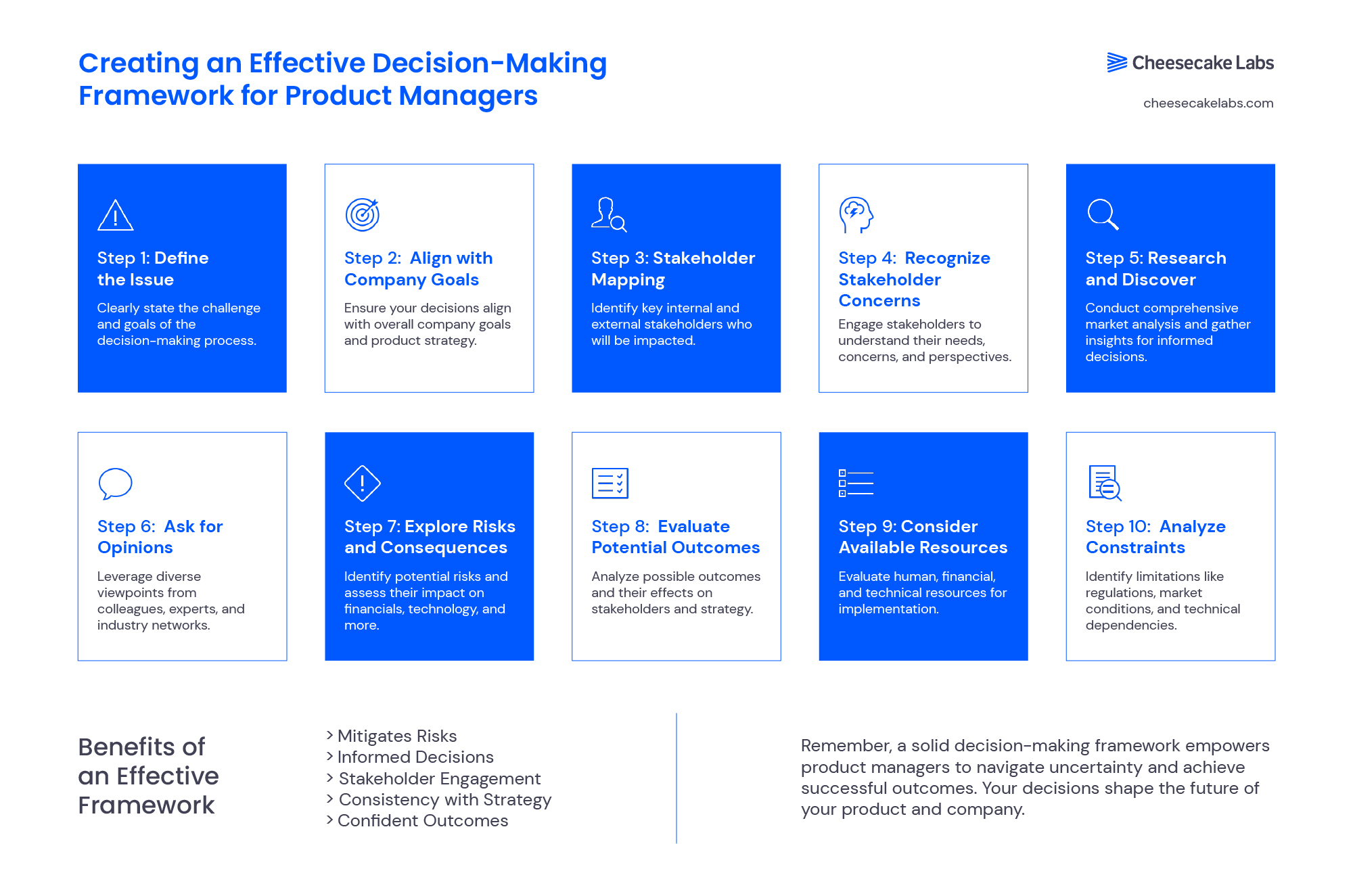Unstyled Components: A Must for Modern Web Applications
Jonathan Felipe de Oliveira | Dec 23, 2025

In today’s constantly changing and fast-paced business world, product managers are often tasked with making informed choices among varying levels of uncertainty and risk. Nimbly navigating these tricky scenarios is essential for any project or product to succeed.
Those who can effectively make decisions in these circumstances can spark innovation, gain a competitive edge, and foster a sustainable future in the market.
Evolving customer needs, changing market dynamics, resource limitations, organizational constraints, and incomplete or conflicting information often puzzle product managers.
These variables can trigger uncertainty and amplify decision-making difficulty. It’s challenging to balance short-term aims and long-term strategic objectives, creating more complexity.
That’s why it’s so important for product managers to acknowledge the challenges of product decision-making and learn how to use proven methodologies to make well-informed choices.
So, we’re going to offer product managers a few techniques to strengthen their ability to make sound decisions in unpredictable situations. Let’s jump in!
If you’re a product manager, you’ll know that you don’t always have the facts in every situation — making it difficult to make smart decisions. So, let’s start by defining what “uncertainty” and “risk” mean in these scenarios and which factors can create/affect them when developing products.
Uncertainty is a lack of understanding or information about upcoming events or results. It is defined as an inability to predict the likelihood or outcomes of certain circumstances.
Uncertainty in product management frequently results from elements including market shifts, technology development, and shifting consumer preferences.
Risk refers to the possibility of injury, loss, or unfavorable results linked with a specific choice or course of action. It takes into account both the likelihood and the seriousness of possible repercussions.
Risk in product management often results from various factors including market competition, governmental policy changes, and operational problems.
Here are a few things that increase uncertainty and risk for product managers:

Product managers need to establish a solid decision-making framework to mitigate risks and uncertainty and keep the development process moving.
For example, during our work with the team at FINN, we were working on scaling some internal products. FINN was scaling fast and needed us to keep a fast development and delivery pace.
To keep up with their growth, we had to make decisions as effectively and quickly as possible without sacrificing quality.
When making decisions, we kept FINN’s long and short-term goals in mind and identified any issues or concerns. We used a continuous discovery process to address anything that came up.
In addition, we were in constant communication with the FINN team about available resources, constraints, and possible outcomes to prioritize what needed to be done and what was most critical for the company.
This customized approach meant we could keep a brisk development pace without tricky decisions slowing us down.
For Product people to build decision-making skills — including developing critical thinking and problem-solving skills, and improving risk assessment and mitigation skills — they should always invest in continuous learning and professional development, and seek out mentoring and peer support.
Improving these skills will help you face uncertainty with confidence and make effective decisions. Here are a few key skills to focus on:
Product people need to develop analytical thinking skills to assess complex situations, identify patterns, and evaluate multiple perspectives. Some activities that can help include gathering relevant information, examining data, and consistently applying logical reasoning to make more informed decisions.
During the discovery and delivery process in Product Management, it’s essential for a Product person to understand the context and gather as much strategic information as possible to make more decisions. Many factors can influence the direction of product development, so gathering, assessing, evaluating, and applying logical reasoning to information and data is essential.
Product people should encourage creative problem-solving skills to generate innovative solutions. This includes encouraging thinking outside the box, embracing diverse perspectives, and ideation sessions to explore alternative approaches to addressing challenges.
Sometimes, Product people need to dive deeper into the users’ heads and be able to solve problems that are not fully apparent or get different contexts to better understand a problem.
Product managers must establish strong risk awareness skills to identify potential risks and assess their potential impact. This includes understanding industry trends, market dynamics, and technological advances that may introduce new risks or disrupt existing product strategies.
Product managers can proactively mitigate risk by developing contingency plans, implementing a risk management framework, and staying informed on risk assessment and mitigation best practices.
Finally, Product people must invest in continuous learning to stay current on industry trends, emerging technologies, and changing customer needs. Product people can do this by attending conferences, attending webinars, reading industry publications, and taking relevant online courses. And don’t forget these essential learning opportunities for Product People, like:
And that’s it! In this article, we explored the concepts of uncertainty and risk for Product people, the factors that can increase uncertainty and risk, and how a Product person can create a framework to make the decision-making process more effective.
We hope it’s helpful to think about the challenges product people face within a company and how important it is to embrace ambiguity and take calculated risks for growth and innovation.
After all, uncertainty and risk are part of every business — so the more prepared you are, the easier it will be to make informed, effective decisions.
If you want to learn more about product management concepts, product development, and how we approach both at Cheesecake Labs, check out our blog.

Would you like to become a Caker and join the Cheesecake Labs team? Take a look at our current openings, or apply for our talent pool — we’d love to hear from you!

A guy who loves listening to piano and atmospheric music, grew up playing RPGs, and loves to code in his spare time. I am very curious and looking for new things to learn and to do. Ah, I also like water and as always as I can, I travel to reconnect myself with nature.


